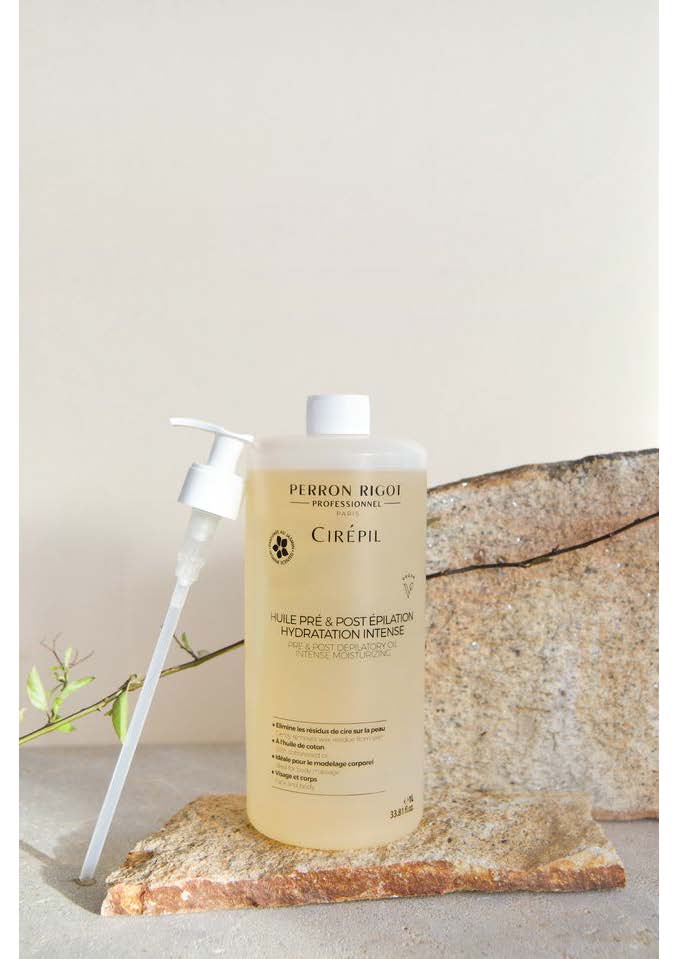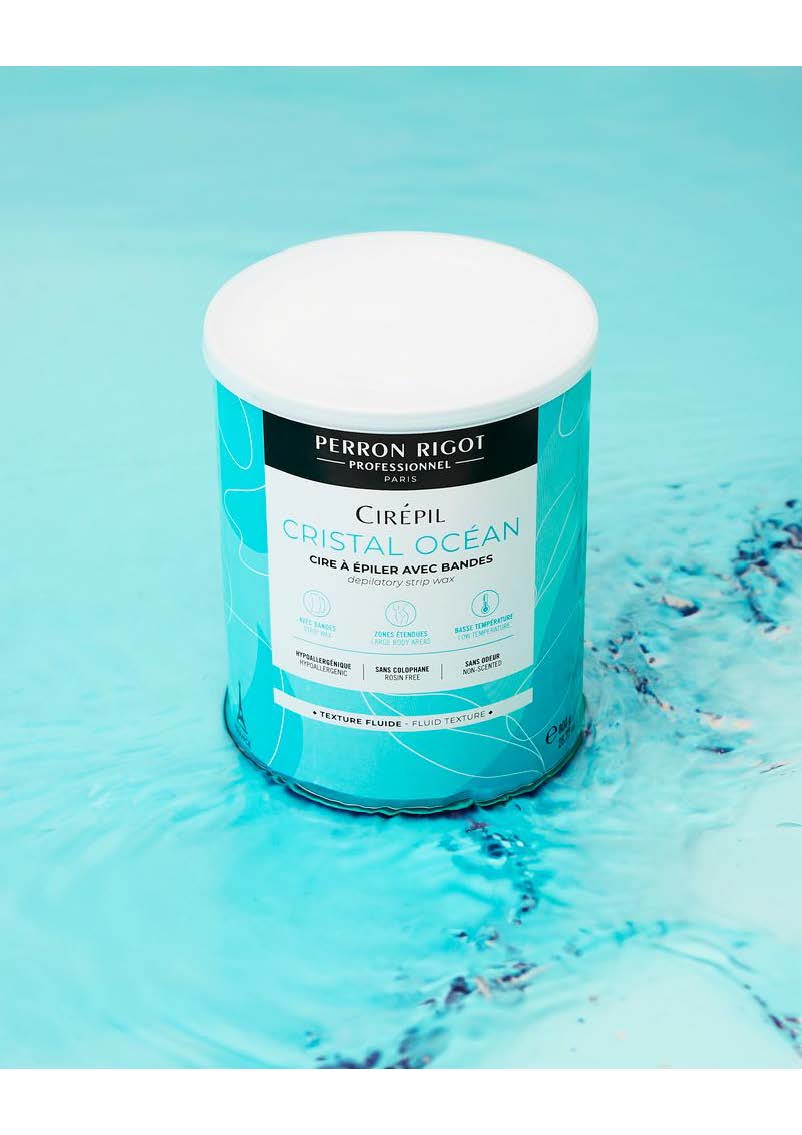From avoiding redness to preventing ingrown hairs, we asked some of the best in the business to share how they overcome some of the biggest waxing problems.
[includes sponsored products]
As we approach summer, clients are getting ready for the warmer weather, and waxing is a staple treatment for many, so how can you achieve the best results for them in your business?
1. Ensuring the wax properly adheres
"Prepping the skin correctly will not only prevent any bacteria getting into the open pores but will help make sure the skin is cleansed of any natural oils, deodorant, moisturisers and sweat – all of which can function as a barrier to the wax," says Becky Priest, owner of waxing business Beauty by Becky.
"Therapists should aim to create the absolute best base to apply wax to. In some cases, a small amount of pre-wax oil can be used to aid wax application on very dry skin, but be careful to only use a small amount, as it can create a barrier."
"It is also especially important to make sure the consistency of your wax is correct. For example, when using hot wax, people find their wax does not always spread brilliantly and sets quicker than expected. Hot wax should have the texture of thick, clear honey for even spreading. Apply with firm pressure to ensure it adheres correctly and sets at the right pace for effective hair removal."
For successful waxing and maximum client comfort, Cirépil Jasmine Oil is your essential pre and post waxing ally.
This vegan, jasmine-scented oil softens and protects the skin before waxing, creating a light barrier that prevents skin lifting and irritation.
Post treatment, it removes residue while moisturising and soothing the skin, reducing redness and improving overall results.
Ideal for both face and body, this oil helps minimise common waxing side effects especially on sensitive areas. Use one-to-two drops before waxing and massage gently afterward.
A lightweight, non-greasy formula designed and manufactured in France for professional use.
2. Ingrown hairs
One of the most common hair removal problems is dealing with ingrown hairs.
Priest highlighted that what happens outside the salon is key: "Ingrown hairs can unfortunately occur for several reasons, but the most common is not following or being provided the proper aftercare."
To keep those stubborn ingrowns at bay, exfoliation is the key. Simply recommend regularly exfoliating with a gentle scrub to your client – this will remove any dead skin cells and keep their pores clear in between waxing appointments.
"When waxing, I advise that clients do not exfoliate the skin on the day of the treatment, or for the first 24 hours afterwards to minimise skin sensitivity. After that, regular exfoliation about 3–4 times a week is key.
"Use gentle, non-irritating products to avoid drying out the skin, or opt for a simple dry brushing technique. Preferably using a brush with natural fibres to lower the risk of inflammation.
Waxing trainer Olga Lampard recommends exfoliating using a sugar or salt-based scrubs. "These dissolve during exfoliation without causing any trouble, especially in the intimate area," she explains. "You can use exfoliating mitts with your scrubs for better grip (make sure you have at least two pairs so you can wash it after every use. Don’t leave it wet under the shower as it will grow bacteria)."
Priest also advises that clients might want to look at what they're wearing, to help prevent ingrowns.
"Tight clothing can also contribute to ingrown hairs, especially as hair begins to grow back, so it’s best to wear loose-fitting clothes after a wax. Clients with curly hair may be more prone to ingrown hairs as their hair tends to curl back in to the skin.
"Regular exfoliation, allowing the skin to breathe, staying hydrated, and maintaining a consistent waxing schedule every 4-6 weeks can significantly reduce ingrown hairs.
Lampard also advises moisturising regularly to avoid ingrown hairs. "Like dry earth makes it difficult for fresh grass to grow through, dry skin is harder for new hair to get through so moisturising daily is a must," she explains.
However, it's important to remind clients not to moisturise on the day of their waxing appointment as this can create a barrier that stops the wax adhering properly.
3. Wax where you don't want it
Wax can be hard to control at times, but don’t worry if you get wax where you don’t want it – you can easily remove it.
“Accidental drips and dribbles on the body can be banished easily with a splash of oil,” shares Andy Rouillard, owner of Axiom Bodyworks in Basingstoke.
“Apply generously, then either wipe with a clean paper strip or twist the hair between your fingers to loosen the wax. Repeat until all stickiness has disappeared.”
If the wax is on a more delicate area, like the eyebrows, waxing educator Abbie McCann recommends, after applying oil, “brushing through the eyebrow gently with a brow brush and repeating this until the wax has been removed".
“If you still have a bit of excess wax that can’t be removed, then placing a little bit of talc onto the eyebrow will help remove the last bit.”
4. Waxing off skin
Skin lifting, or when skin has been taken off during the waxing treatment, can leave your clients looking like they have burns – but what causes it?
Priest has three top tips to avoid skin lifting when waxing: "Skin lifting is every waxer’s worst nightmare! However, with a few simple adjustments, it can be prevented.
- "Use the right type of wax for the correct areas to keep the skin protected. Hot wax should be used on delicate, sensitive areas such as your face, underarms, and bikini area.
- "Always keep the skin taut when waxing. being assertive will not only show confidence, make the client feel comfortable but will also help prevent the skin bouncing and tugging under the wax.
- "Carry out regular checks on your clients. Always check medications, treatments, and skin care routines like retinols or AHA’s, which can increase skin sensitivity. Clients may need to pause use before their wax appointment."
When using hot wax, it’s also important to use a high-quality pre-waxing oil. This little secret weapon acts as a barrier between the wax and the clients precious skin, preventing the chances of skin-lifting or tugging.
If you’re using strip wax and experiencing skin-lifting, you may need to reconsider the wax you’re using on that particular area of skin and switch to hot wax.
Before you even start, you should be equipped with the right knowledge and expertise so you know how to perform waxing treatments with the utmost care and precision, ensuring the skin remains smooth and irritation-free.
A professional favourite for good reason, Cirépil Euroblonde is designed to solve many common waxing issues from hair breakage to skin sensitivity.
Suitable for all areas and all hair types, this non-strip wax features a fluid texture that allows for ultra-thin application and efficient use.
It grips even the shortest hairs with precision and removes cleanly on the first try minimising discomfort and reducing the risk of skin trauma.
The flexible wax sets with optimum drying time, and the strips remain pliable without breaking, making it ideal for both beginners and experts. A go-to solution for smooth, consistent results and available in bulk bag size – and Perron Rigot has introduced a new loyalty programme on its website too.
5. When wax won't set
For maximum hair removal, you need to ensure your wax has been set correctly.
“If your hot wax is taking too long to set on warmer parts of the body or in humid weather, simply dampen a cotton pad with cold water and wipe over any gummy patches to cool and harden it instantly,” advises Rouillard.
McCann’s top tip for hot wax which isn’t setting is to “place talc on top of the wax and rubbing with your hand; this will help the wax to cool down and set”.
6. Wax left on the skin when the strip is removed
“This usually happens because the wax has gone cold – either the client’s skin is too cool, or the wax has been applied too thickly. To solve the problem, apply strip wax in thin, single layers to avoid build-up and work in smaller sections if this keeps happening,” says Rouillard.
“If the problem is due to dry skin, massage a few drops of oil into the area before applying your wax to act as a lipid barrier.”
To get all the wax on the first go, always ensure the skin is held taut during application and removal, especially on areas with folds such as the upper thighs, bikini line and underarms.
“Don’t be afraid to ask your client to help with stretching where necessary,” says Rouillard.
“Don’t 'dab' to remove waxy residue as this is uncomfortable for clients. Lay a fresh paper strip over the top at a slightly different angle, rub briskly and remove in a single swift motion. As a last resort, use oil to dissolve any sticky bits, re-cleanse and start again.”
7. Hair length matters
There’s a sweet spot for waxing when it comes to hair length – hair that’s too short struggles to be picked up by the wax, while hair that’s too long faces its own issues.
“Clients should wait at least three weeks after shaving or using hair removal creams, and four weeks after their last wax, to get best results,” says Rouillard.
“To remove multiple stubborn hairs, use firm pressure, apply a layer of peelable wax against the direction of hair growth and allow to dry. Stretching the skin taut, lift and remove wax with the direction of growth in several slow, tiny wiggles, re-bracing the skin at every step of the way to stop shorter hairs popping out of the wax.”
As for long hairs, don’t be afraid to reach for the scissors. “Often the hairs haven’t been treated for many months, so if that’s the case, ensure you are trimming down any long hair to around a quarter of an inch because long unruly hair can cause problems when waxing from extra skin trauma and bruising to unnecessary pain,” advises waxing trainer Lisa Stone.
8. Tackling redness and irritation
"Redness or a warm, pink appearance on the skin after waxing are normal, common reactions," says Priest, "For certain clients, this may seem visibly fiercer but that does not actually mean that it feels any different. Clients with red hair for instance, will generally appear to have a much more visible reaction after a wax, but this usually subsides within a few hours and clears within 24."
"However, severe redness, swelling, or burning could indicate an allergic reaction, and clients should seek advice from a pharmacist or GP. This is exceedingly rare to find but still important to be aware of."
"To minimise irritation: always check wax temperature before application. Cleanse the skin correctly beforehand, and apply soothing oils or lotions post-wax to calm the skin."
A best-seller, Cirépil Cristal Océan is recognised and appreciated for its premium formula that effectively removes all hair types while respecting even the most fragile skin.
This ultra-thin, translucent blue wax is rosin-free, odourless, hypoallergenic and clinically tested, making it ideal for reducing post-depilation reactions such as redness or irritation.
Its fluid texture allows smooth, even application, while the vegan, low-temperature formula (68°–72°) ensures a gentle and comfortable waxing experience.
Perfect for large areas like legs, arms and back, Cristal Océan is the go-to choice for professionals prioritising skin health and consistent results.
Sophie Mitchell, a trainer for Perron Rigot, recommends using low-temperature waxes like Cristal Océan or Euroblonde by applying them in thin layers it helps grip the hair, not the skin, which means less irritation and a more comfortable experience for the client.
9. Client comfort and communication
To keep the client comfortable, Priest says to "Reassure clients about what to expect, and always speak positively throughout the treatment."
"Sometimes we can focus so much on the wax procedure that we forget the person lying on our couch experiencing an intimate wax, especially for the first time," shares founder of Eve Beauty Studio Natasha Miller.
"Listen to your client's worries and needs of which 90% have them especially if they are new to waxing.
"Some have never experienced an intimate wax even at the age of 40 and then you have the clients who have been put off waxing because of a therapist or product range but ultimately pain."
As for her top tips for avoiding discomfort, Priest suggests "Applying a firm hand pressure immediately after each wax removal helps to reduce the tingling sensation and soothes the skin. This will help their overall mindset towards the experience and put them at ease. "
Miller also proposed some techniques, "Stretch the skin when applying and removing your wax. We don't want to remove too big of a patch or too small, always assess your client's reaction and skin during treatment.







